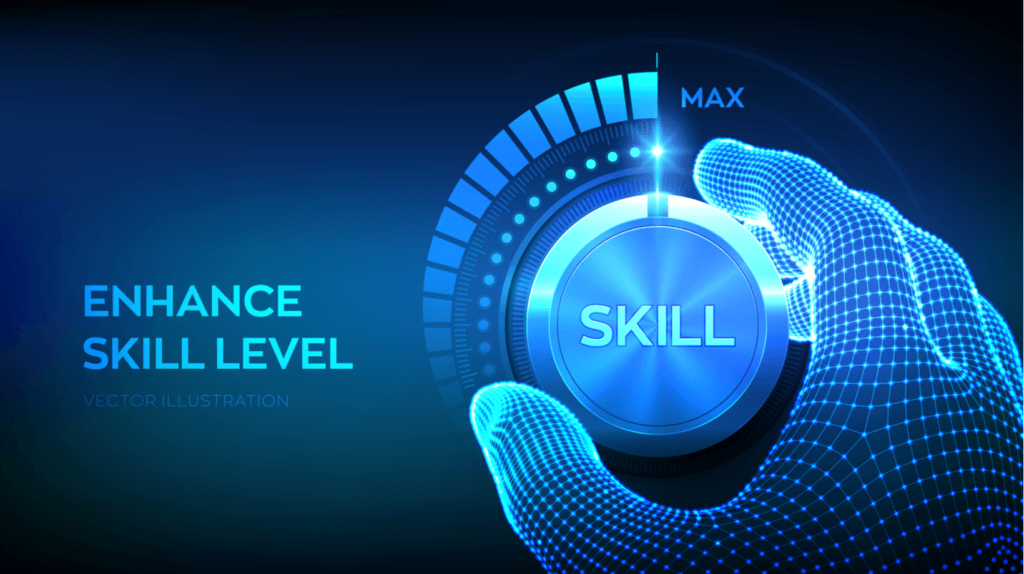Prime Mobile Learning Examples For Skill Building
How do you train your employees on a new CRM or software that’s being introduced in your organization to streamline operations? Furthermore, how do you train your sales reps on new products or sales skills when they have little time for in-person, face-to-face training? How do you onboard your millennial new hires amidst all the pressure and chaos that is onboarding? The answer is skills training. The core objective of skills training is to boost learner motivation and confidence and give them a sense of direction to tackle workplace challenges. Here are 3 mobile learning examples of skills training that can be offered with mLearning, along with some tips to get you started.

3 Examples Of Skills Training With Mobile Learning
1. Software Training To Help Learners Transition To A New Software/CRM
Organizations implement new software applications all the time to streamline operations. This includes application software for managing:
- Human resources
- Financial activities
- Customer relationships
Traditional learning formats are usually used to train employees on new software. But that could take months depending on the features, functions, and applications of these tools. Traditional strategies also fail to address these challenges with software training:
- Employees’ reluctance to use the new software due to its steep learning curve
- Millennials’ preference for non-traditional learning methods
- Offering personalized support in case of conflicts
- Providing continuous learning opportunities outside the formal training environments
As an online trainer, you ought to look for ways to overcome these challenges, because at the end of the day, employees do want to upgrade their skill sets to be able to operate the new system.
The Mobile Learning Solution
Mobile learning for software training can solve all these challenges and open the door to other opportunities too. Here’s how:
Improve Accessibility
Bite-sized content that employees can access anytime, anywhere sends a message that the software training is just a series of small, manageable steps, nothing to be overwhelmed about.
Focus On Specific Topics
Divide the overall training into small modules based on individual topics. For instance, you could begin with a ‘What’s new in X CRM?’ module on how the new system is different from the one they are using. This can be followed by ‘How to create entries using the CRM’, and so on. Each module should cover only one learning objective. This not only makes learning easy but also makes searching for specific content that much faster and easier.
Tip: You could also divide content according to department, job role, geographical region, language – anything to make the training seem less onerous for the learner.
Maximize Video-Based Learning
Incorporate micro videos to demonstrate how to use the application software, and take them through different real-world scenarios of using the software. These videos are ideal performance support tools (PSTs) too. Host infographics, flowcharts, and diagrams on a portal/mobile app to show learners how to perform various procedures on the application system.
Implement Mobile Apps
Use mobile apps as PSTs to:
- Enable learners to reach out to SMEs/trainers/IT personnel from within the app for their advice on the software.
- Offer job-aids (infographics, eBooks, videos) that are readily available within the employee’s workflow for the needed on-the-job support.
- Push refresher material periodically to beat the forgetting curve.
- Allow employees to learn with their peers and share information about how to solve common challenges related to the application.
2. Sales Training To Impart Decision-Making And Customer Objection Handling Skills
Of all the skills sales representatives are required to have, those on decision-making and showing genuine empathy for the customer top the list. Traditional methods of training are not an option, given how busy sales reps are. They rarely get time off their busy schedules for training.
And that’s why offering them learning on-the-go makes more sense than inviting them to a physical classroom to go through long training sessions. (Note that face-to-face classroom training has its own unique benefits, even if it falls short of meeting the on-the-go sales reps’ learning challenges.)
The Mobile Learning Solution
Apart from sending the latest product information as and when it is available, mobile learning is a perfect fit for mobile learners. That’s because you can:
Impart Practical Experience
Create real-world experiences for your sales reps instead of just using buyer personas.
Use Scenario-Based Microlearning Videos
Introduce new hires to your customers’ perspectives through scenario-based mLearning videos. These videos could also be used to impart several essential sales skills such as:
- Pitching a sale
- Presenting products to create impact
- Guiding prospects through the sales process
- Handling customer objections
- Closing a deal
Tip: As these will be delivered on the mobile, keep scenarios short; also, use elements that load easily on mobiles regardless of Internet connectivity.
Add Decision-Making Simulations
Provide decision-making simulations where sales reps can practice their critical thinking and decision-making skills and experience the impact of their choices in a risk-free environment.
Incorporate Problem-Based Evaluations
Offer problem-based assessments (hosted on the LMS for mobile access) to test their understanding instead of the usual multiple-choice questions. As part of their assessment, you could:
- Ask them to record and upload their responses (audio or video) to the LMS or divide them into groups and give them a project to work on.
- Have them record role-playing from a customer’s perspective so that they can understand the customer better.
Assessments like these encourage reflection and help them build essential ‘people skills’.
Tip: Hosting assessments on the LMS allows you to track learners’ performance too. Learning analytics from the LMS offer great insights into the skill levels of individual sales reps. This information can be used to offer learner-specific content for further learning, if required.
Include Reference Guides
Include (mobile-friendly) quick reference guides and success stories in the form of eBooks and videos to increase motivation. They could be as simple as an infographic or video on the right and wrong ways of handling customer objections.
3. New Hire Training On Soft Skills And Job Roles/Responsibilities
Soft skills are a combination of people skills, social skills, and communication skills, among others. These are higher order skills which help employees navigate through the corporate world – where they are expected to be competitive and build strong relationships with their colleagues and customers. Apart from clarifying job roles and responsibilities, training to improve the new hire’s soft skills will enable them to network with people and manage conflict and responsibilities at work.
Let’s see how you can use mobile learning app to tick these boxes.
The Mobile Learning Solution
Don’t overwhelm your new hires by making them go through text-heavy training. Instead, make learning fun and flexible by offering scenario-based videos they can access on their devices through the mobile learning app. These videos can be based on real-world situations on leadership, communication, and management.
Use Diverse Delivery Formats
You can also offer soft skills training in various formats including podcasts, videos, games, etc., which is a flexibility that mobile apps very well offers.
Convert Onboarding Training Into A Gaming Experience
Turn the onboarding experience into a mobile-based game where learners learn something new each day using a mobile app.
- On Day 1, set expectations and introduce objectives.
- Day 2 can elaborate their job roles.
- Day 3 could be them (virtually) visiting different departments and meeting colleagues.
However, there are a few things you need to take care with mobile apps to offer optimal learning experiences. For instance, always provide a link to the support desk within the app, so that new hires can simply reach out at the click of a button in case of any problem.
Reward Online Learners
Recognize and reward their accomplishments every time they complete a task. There is nothing more satisfying for new hires than to be recognized for their efforts when they are just starting out in the organization.
Provide Quick And Convenient References
Include easy-to-access reference tools for them to access in the app. These could include:
- Contact information of the mentors/coaches
- Checklist of day-to-day activities
- A map of the company’s campus
- Basic IT security measures
Conclusion
So, these are just few examples of how mobile learning apps are optimal for skills training, there can be many! Do you have any other skill training examples that can be done with mobile learning?
How do you keep up with mLearning trends? What are the steps to create memorable mobile-friendly content for your team? Download the eBook An L&D Manager’s Mobile Learning Guide To Leverage Personalized Content For Skills Training for insider secrets to launch a successful strategy. You can also join the webinar to discover mobile learning best practices and overlooked benefits.
References:
- Converting Classroom Training to eLearning? Watch Out for These Five Pitfalls
- Training through Mobile Apps: Enabling Training Anytime, Anywhere
- 5 Ideas to Build an Engaging Mobile Learning Experience
- Microlearning to Boost Employee Performance
- 5 Tips to Enhance Training Skills with Informal Learning


